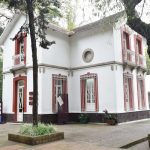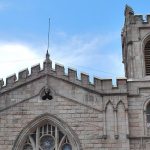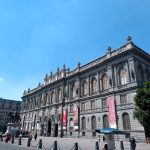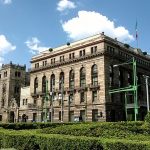
El Palacio de Cobián es conocido por la mayoría de los residentes de la Ciudad de México simplemente como Gobernación. La Secretaría de Gobernación es una de las instancias más importantes del Gobierno Federal, y como tal, a menudo es escenario de protestas por las cuales hay que cerrar por completo la Avenida Bucareli al tráfico directo. Hay manifestaciones que se han prolongado durante meses, provocando la ira de los automovilistas.
Dicho esto, muy pocos conocen la historia del sitio. Bucareli fue, durante más de 100 años, la avenida más destacada de la Ciudad de México. Inaugurada en 1775 con el nombre de Paseo Nuevo, fue el proyecto del Virrey Antonio María de Bucareli y Ursúa, por ello la gente empezó a referirse a la vía como “Avenida Bucareli” informalmente. La calle siguió siendo la más prominente de la ciudad hasta que se desarrolló el Paseo de la Reforma a principios del Porfiriato.
Un rico comerciante español de algodón, Feliciano Cobián, compró un lote aquí en 1902. Luego contrató a un arquitecto llamado Emilio Dondé para construir su casa. Dondé es probablemente más conocido por la Iglesia San Felipe Jesús (1885-1897) en la Avenida Madero.
El terreno había albergado un importante cobertizo para tranvías junto con su sede administrativa, y Dondé aprovechó algunos de los cimientos existentes para el nuevo edificio, que erigió rápidamente. El arquitecto agregó las alas norte y sur con terrazas elevadas. El ala sur, enclaustrada en vidrio, todavía se yergue distinguidamente sobre la Calle de| General Prim.
Obviamente, el complejo ha crecido considerablemente a lo largo del siglo XX. Imaginarlo como una antigua residencia neoclásica podría dar a los transeúntes una apreciación muy diferente de la mansión. De hecho, el período de construcción original duró apenas ocho meses. Esto se debió, en parte, a la reutilización de las estructuras que ya estaban en el sitio. La familia de Feliciano Cobián se instaló en la casa en 1903.
Pocos años después, en 1909, justo antes de la Revolución, el Palacio de Cobián fue incautado por el Gobierno Federal. Bajo la presidencia de Porfirio Díaz, el Ministerio del Interior tomó el control y ofreció el edificio brevemente a la Delegación de los EE.UU y posteriormente a la Embajada de los Estados Unidos, durante el Centenario de la Independencia de México en 1910.
Con la caída del gobierno de Díaz, los estadounidenses abandonaron el edificio, que aún tuvo que sufrir el embate de la Decena Trágica. El Reloj Chino original, entonces colocado fuera de la Ciudadela, fue destruido casi por completo y fue reemplazado durante las celebraciones del centenario de la Consumación de la Independencia de México en 1921.
Hoy en día, el Palacio de Cobián está protegido por elementos de seguridad. Durante la mayor parte del siglo XX, se utilizó como oficina del candidato más probable a la presidencia e informalmente, el candidato podía ser referido como el “ocupante de Bucareli”.
Rafael Fierro Gossman, 22 de abril de 2013, La casa de don Feliciano Cobián F. y Rosalía Fernández del Valle en Bucareli. https://grandescasasdemexico.blogspot.com/2013/04/la-casa-de-don-feliciano-cobian-f-y.html

Cercano a 0.03 kms.

Cercano a 0.16 kms.

Cercano a 0.21 kms.

One of Chapultepec's more sublime historic homes is a cultural center, too.

One of Avenida Madero's most famous corners . . .

A historic Methodist church on the Avenida Balderas . . .

El Museo Nacional de Arte en el Centro Histórico de la Ciudad de México siempre será un punto memorable de tus vacaciones.

Un sublime estilo renacentista italiano ha recibido a los transeúntes durante casi 120 años. Esto es de lo que se trata.